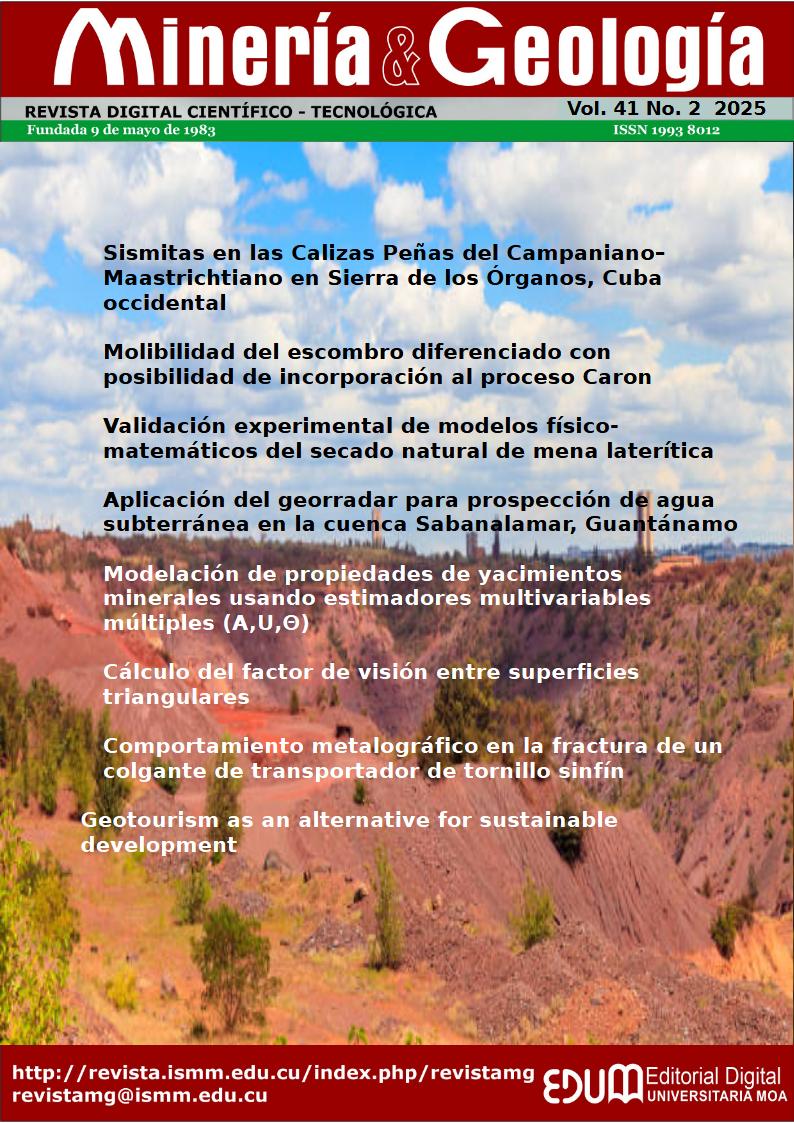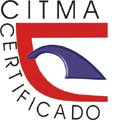Metallographic behavior in the fracture of a pendant of an endless screw conveyor
Keywords:
pendant, fracture, fatigue, cracks, internal structure, screw conveyorAbstract
This study aims to determine the internal structure in the fracture failure of pendant of an endless screw conveyor made of AISI 4340 steel. The fractured element was visually inspected and cut into sections, close to the damaged area and the furthest from it for determining the hardness effect after the event occurred. The methodology to establish the percentage of microconstituent was established. Our results showed that the fracture failure of pendant is caused by the forming concentric circular marks with beach marks on fatigue fracture, indicating fracture by cleavage mechanism, where hardness values in the fracture zone are between 329.8 HV and in the zone farther away from the failure, the value is 326.4 HV, property reached when applying tempering heat treatment at 600 °C.Downloads
References
Albarbar, A. (2013). An investigation into diesel engine air-borne acoustics using continuous wavelet transforms. Journal of Mechanical Science and Technology, (27).
Ayatollahi, M., Razavi, S., Chamani, H. (2014). Fatigue life extension by crack repair using stop-hole technique under pure mode-I and pure mode-II loading conditions. Procedia Engineering, 74, 18-21.
Cavalieri, F., Luengo, C., Cardona, A. (2011). Análisis de fatiga en muy alto número de ciclos. Revista Iberoamericana de Ingeniería Mecánica, 15(1), 03-12.
Gainza-Legrá, A. (2016). Análisis de rotura del espárrago situado en el cárter de los motores MAN de la unidad empresarial de base generación motores FUEL-OIL de Moa. (Tesis de Ingeniero Mecánico, Universidad de Moa).
Govindu, N., Jayanand, T., & Venkadesh, S. (2015). Design and optimization of screwed fasteners to reduce stress concentration factor. J. Appl. Mech. Eng, 4, 1000171.
Guerra-Fernández, Y., Ordoñez-Hernández, U., González-Fernández, V. (2019). Análisis de la falla de pernos de fijación de las zapatas polares de un motogenerador. Ingeniería Mecánica, 22(3):156-160.
Inzana, J., Varga, P., Windolf, M. (2016). Implicit modelling of screw threads for efficient finite element analysis of complex bone-implant systems. Journal of Biomechanics, 49(9), 1836-1844.
Jaramillo, H., & Bacca, L. (2009). Una propuesta para la determinación de la tenacidad a la fractura mediante elementos finitos. Suplemento de la Revista Latinoamericana de Metalurgia y Materiales, S1(4), 1641-1616.
Lee, C. H., Kim, B. J., & Han, S. Y. (2014). Mechanism for reducing stress concentrations in bolt-nut connectors. International journal of precision engineering and manufacturing, 15, 1337-1343.
Madenci, E., Guven, I. (2015). The Finite Element Method and Applications in Engineering Using ANSYS. Second Edition, Springer.
Mantwatkar, A., Chavan, S. (2016). Failure analysis of high tensile industrial fasteners. International Journal of Scientific and Research Publications, 6(3), 132-37.
Megias, R., Belda, R., Vercher-Martínez, A., Giner, E. (2023). Estudio de la fractura a compresión de hueso trabecular sano, osteoporótico y artrósico procedente de cabezas femorales humanas. Revista Española de Mecánica de Fractura, (5), 21-26.
Srivastava, A., Ponson, L., Osovski, S., Bouchaud, E., Tvrgaard, V., Ravi-Chandar, K., Needleman, A. (2015). The effect of loading rate on ductile fracture toughness and fracture surface roughness. Journal of Mechanics and Physics of Solids, 76(7), 20-46.
Vázquez, A., Mantic, V., Muñoz-Reja, M., Távara, L. (2023). Nuevo elemento finito para singularidades logarítmicas de tensión en grietas de interfase tipo Winkler en modo III. Revista española de mecánica de la fractura, (5), 213-218.
Published
How to Cite
Issue
Section
Copyright (c) 2025 Lisander Romero Breffe

This work is licensed under a Creative Commons Attribution-NonCommercial 4.0 International License.
- Authors retain copyright and guaranteeing the right magazine to be the first publication of the work as licensed under a Creative Commons Attribution-NonCommercial that allows others to share the work with an acknowledgment of the work's authorship and initial publication in this journal.
- Authors may establish separate supplemental agreements for the exclusive distribution version of the work published in the journal (eg, place it in an institutional repository or publish it in a book), with an acknowledgment of its initial publication in this journal.
- Authors are allowed and recommended to disseminate their work through the Internet (e.g., in institutional telematic archives or on their websites) before and during the submission process, which can produce interesting exchanges and increase citations of the published work. (See The effect of open access)










